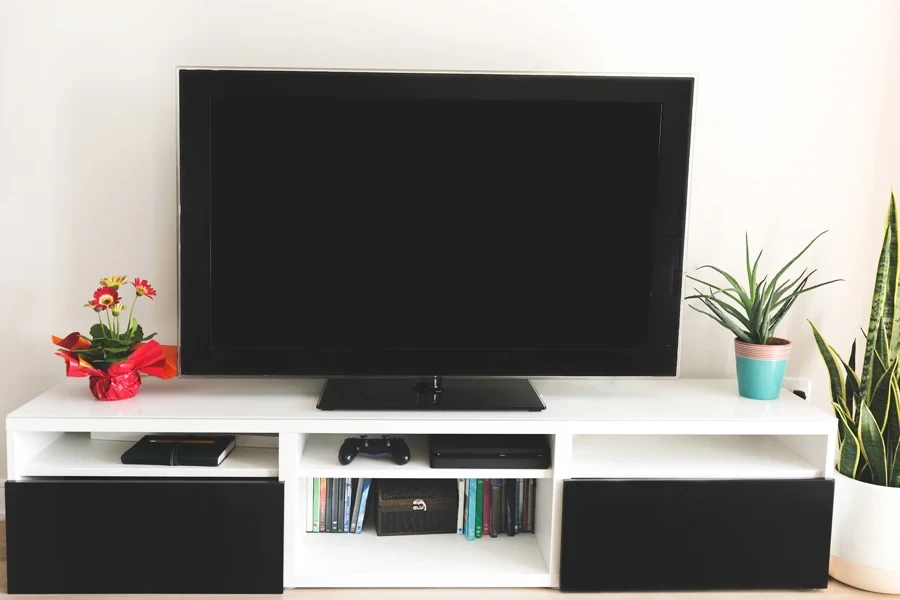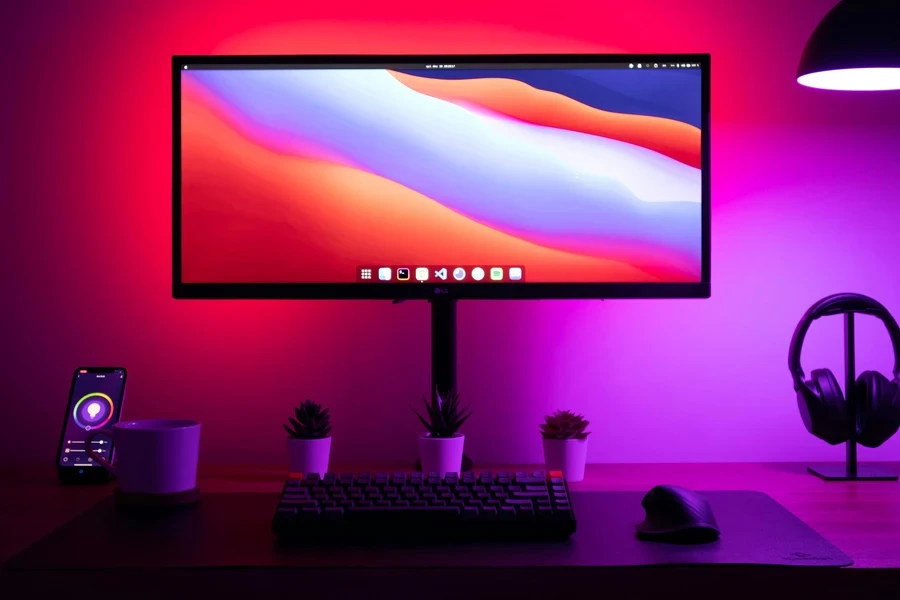LED and LCD TVs continue to dominate the television market, offering a combination of high-quality visuals, innovative technology, and affordability. As these technologies evolve, they bring sharper resolution, smarter features, and more energy-efficient designs, making them essential for modern consumers.
Whether for immersive home entertainment or simple everyday viewing, both LED and LCD TVs offer something for every type of user. With continuous advancements, these televisions are well-positioned to meet growing consumer demands in 2025 and beyond.
Table of Contents
● Market overview
● Key technology and design innovations
● Top-selling models driving market trends
● Conclusion

Market overview
The LED and LCD TV market continues to expand globally, with significant growth observed in emerging markets like India. As of 2024, India’s television market is valued at approximately USD 2.6 billion, with LED/LCD TVs dominating due to their affordability and widespread adoption. Although the overall market is expected to experience modest growth (CAGR of -0.38% from 2024 to 2029), the demand for smart and high-resolution TVs, especially in urban areas, remains strong. This demand is fueled by increased internet accessibility and the popularity of online streaming services, according to Statista.
Globally, LED/LCD TVs account for the majority of TV sales, catering to both budget-conscious consumers and those seeking advanced features like 4K resolution and smart technology. High-resolution displays, particularly 4K and 8K models, are increasingly popular among tech enthusiasts and gamers. Markets like the U.S. generate significant revenue, with USD 18.19 billion expected in 2024, showcasing the global appeal of LED/LCD technology, according to Statista.

Key technology and design innovations
Advancements in LED backlighting and LCD display technology have significantly improved picture quality, brightness, and color accuracy in modern televisions. LED TVs, which use light-emitting diodes for backlighting, offer more consistent illumination, better contrast, and deeper blacks than traditional LCD models. These improvements make LED displays ideal for both bright and dimly lit environments, enhancing the overall viewing experience. According to Haier India, innovations in these backlighting systems are essential for achieving brighter images while maintaining energy efficiency, a key selling point in the market.
High-resolution displays are also driving the market, with 4K resolution now becoming the standard across both LED and LCD TVs. These displays offer four times the pixel count of Full HD models, resulting in sharper and more detailed images. Many models now include HDR (High Dynamic Range) and Dolby Vision technology, which enhances contrast and color depth, further elevating the viewing experience. According to RTINGS, the increasing availability of 4K and 8K content, combined with these advancements, is pushing consumers to upgrade their televisions for a more immersive home entertainment experience.
Both LED and LCD TVs are also embracing smart features, with AI integration and voice control becoming common across many models. These smart capabilities allow users to control their TVs through voice commands and seamlessly connect with other smart devices in their homes. According to Custom Market Insights, the growing popularity of smart TVs is linked to the integration of these advanced features, which enhance convenience and personalization for users, particularly in markets like India, where smart home ecosystems are gaining traction.
In addition to technological upgrades, modern LED and LCD TVs have made strides in energy efficiency and design. Thinner, more stylish models are now standard, catering to consumers who prioritize aesthetics as much as performance. Energy-efficient features, like adaptive brightness and low power consumption modes, are also becoming increasingly important, helping reduce electricity costs while maintaining high-quality display performance. According to Haier India, these design innovations have contributed to the growing popularity of LED and LCD TVs as they fit seamlessly into modern home decor without sacrificing functionality.

Top-selling models driving market trends
The Sony BRAVIA LED series continues to set the standard in high-performance LED TVs, particularly due to its exceptional display technology and smart features. With advanced backlighting, the BRAVIA models achieve deep blacks and precise color accuracy, ensuring vibrant images even in challenging lighting conditions. Paired with 4K resolution and HDR support, it provides sharp, clear visuals perfect for both entertainment and gaming. Additionally, its smart platform supports seamless integration with voice-controlled assistants and a wide range of streaming services. According to RTINGS, this series is favored for its balanced combination of premium display and intuitive smart features, positioning it as a leader in the LED TV segment.
The Samsung Neo QLED series, recognized for its quantum dot technology, offers industry-leading brightness and exceptional HDR performance. Its quantum dots enhance color accuracy and brightness levels, delivering vivid, lifelike pictures that stand out, especially in well-lit environments. The Neo QLED’s adoption of 8K resolution models further elevates Samsung’s status in the premium TV market, appealing to tech enthusiasts who seek the ultimate in visual clarity. The series also excels in HDR content, offering precise local dimming and rich contrasts that make it ideal for high-end home theater setups. According to Haier India, Samsung’s commitment to quantum dot innovation continues to push the boundaries of picture quality and smart TV functionality.

In the OLED segment, the LG OLED C Series is widely regarded as one of the best options for those seeking superior picture quality. Its self-lighting pixels allow for perfect blacks and infinite contrast, offering a dramatic improvement over standard LED technology. This feature enables the TV to deliver rich, vibrant colors with greater detail in both dark and light scenes, making it a top choice for movie buffs and gamers who value immersive visuals. The LG OLED C Series also boasts low input lag and high refresh rates, making it ideal for gaming. According to Custom Market Insights, LG’s OLED models are favored for their sleek design, energy efficiency, and unrivaled visual performance, maintaining their position as a leader in premium TVs.
The Roku Select Series fills an important niche in the market by providing cost-effective smart TVs with solid performance. Though it may not offer the high-end features found in premium models, it excels in delivering a smooth, user-friendly experience with the popular Roku smart platform. This platform gives users easy access to streaming services, making it a practical option for those who prioritize affordability without sacrificing essential smart features. According to RTINGS, the Roku Select Series is particularly popular among budget-conscious buyers who want a reliable TV that includes smart capabilities, responsive performance, and good picture quality for everyday viewing.

Conclusion
LED and LCD TVs continue to evolve, driven by advancements in display technology, smart features, and energy efficiency. With innovations like 4K and 8K resolution, quantum dot technology, and AI integration, both LED and LCD models offer a range of options for various consumer needs. From premium models like Sony BRAVIA and Samsung Neo QLED to budget-friendly choices like the Roku Select Series, these TVs cater to a wide audience, ensuring their relevance in the television market for years to come.




